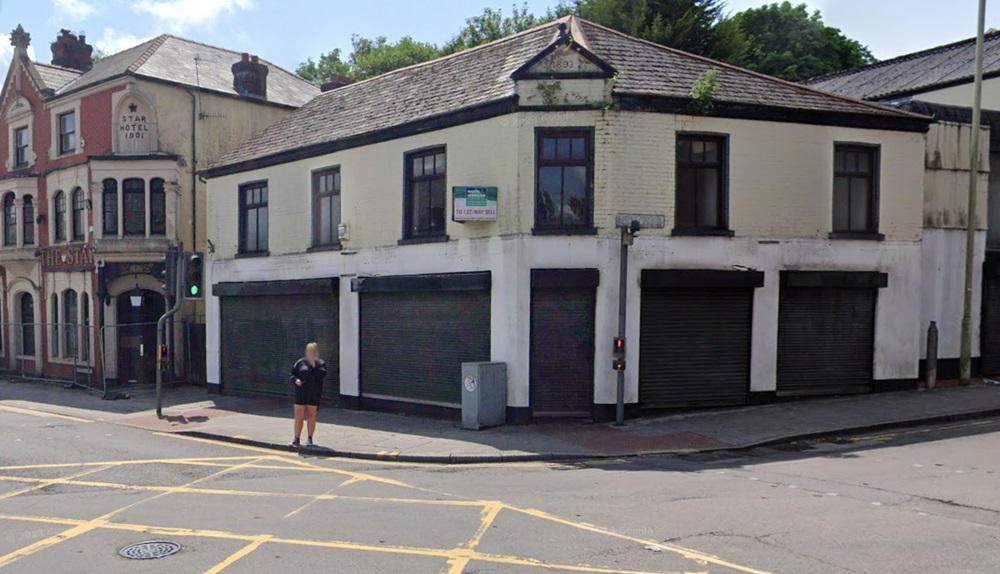Historic building in Valleys conservation area saved from demolition

Martin Shipton
Residents of a Valleys town have been celebrating a decision not to grant permission for an empty building in its central conservation area to be demolished.
Walters Environmental Ltd had wanted to knock down the building in Commercial Street, Maesteg to make it easier to transport wind turbines to a site above the town.
But Bridgend county borough councillors have sided with objectors who argued it would be “cultural vandalism” to knock down a building that was erected in 1893, in its industrial heyday.
Unviable
In a submission to the council’s planning committee, Walters said: “[Taking] into consideration that the building is in a poor state of repair, is unviable, does not meet modern occupier requirements so there is no demand for its use and has ‘negligible’ interest or significance in and of itself, its proposed demolition should be considered wholly acceptable. “Considered against the above is the enabling opportunity the demolition of the building would offer – its removal would help aid the transportation of turbines to the consented Foel Trawsnant wind farm.
“The wind farm was approved in April 2023 and proposes the development of eight wind turbines with a generating capacity of up to 35MW – all of which contributes towards the renewable energy targets set out by the Welsh Government. “Demolition of the existing building at 145 Commercial Street will aid the transportation of turbines, reducing the risk and safety factors of the construction process in delivering turbine components through the commercial centre of Maesteg … This enabling opportunity should be viewed favourably and positively as it brings the prospect for investment, jobs, and green energy generation in Wales.
“Following demolition, the redevelopment proposals for the site include a replacement building that would better meet modern occupier requirements.”
Written submission
However, those opposed to the demolition made a written submission that stated: “Maesteg town centre is a conservation area and this shop is an integral part of the conservation area. Maesteg was designated a conservation area in 2001 and contains a number of listed buildings and a number of buildings of special architectural and historic Interest. The former Travella/Joseph Bros building is not listed as one of these, but looking at the criteria it appears to have been unjustly overlooked.
“The architecture along the very wide Commercial Street varies greatly, from late 19th/ early 20th century ostentatious inns and public houses…The commercial core consists of a variety of vernacular, classical and other architectural styles in addition to an array of detailing creating visual interest.
“The building was erected in 1893 and established as a furniture shop in the latter part of the 19th century by the Joseph Bros (Barnet, Kenneth and Solomon Joseph) who came from Birmingham at the latter part of the 19th/ early 29th century. In the 1901 census two of the brothers living at 92 Commercial Street are described as furniture dealers, so it is reasonable to assume they were at the forefront of the shopping boom and the creation of the town centre.
“Maesteg is a post-industrial town and some people would say it has been left behind and the town and wider valley area purveys a sense of existential hopelessness and despair. What the town needs is economic regeneration and the current building could have so many uses to play in that.
“In 2026 Maesteg will be celebrating its bicentenary and one way of celebrating this historic milestone is by investing in our future not knocking buildings down – that is nothing short of cultural vandalism. We have lost a number of historical buildings over the years and The Corn Stores, for example, is one which once faced the bulldozer but is now a thriving leisure centre and was saved from the bulldozer by a concerted campaign.
• To lose such an historic building for an erratic wind power station is unjustifiable. Give a sense of hope and reject this application.”
Councillors voted to reject the proposal to demolish the building.
History
Local councillor Ross Thomas said: “The building has stood at the heart of the town centre for more than 130 years and has housed some wonderful businesses over that time. While not having listed status, it still forms part of the history of Maesteg.
“The key driver in this application appeared to be the ease of getting wind turbines through the town centre to a recently-approved wind farm scheme in the neighbouring Neath Port Talbot area. My primary concern, therefore, was having the demolition take place and for this key site in the town centre potentially to be left as a derelict site full of rubble after it has done its job for the developer.
“While I appreciate buildings are purchased for a variety of reasons and end-goals, I think a town centre opportunity like this could prove fruitful for both a proprietor and the local community if it were to be put to good use and redeveloped sympathetically.
“Like many other valley towns, Maesteg has a number of retail premises which have fallen into disrepair. The local authority has a generous regeneration grant scheme which has helped spruce up some buildings – my hope is that the owners of this building will take the opportunity to bring it back into use or to sell it to someone who is willing to make the effort.”
Numerous local residents have contacted Cllr Thomas to express their pleasure that the building has been saved from demolition.
Support our Nation today
For the price of a cup of coffee a month you can help us create an independent, not-for-profit, national news service for the people of Wales, by the people of Wales.




